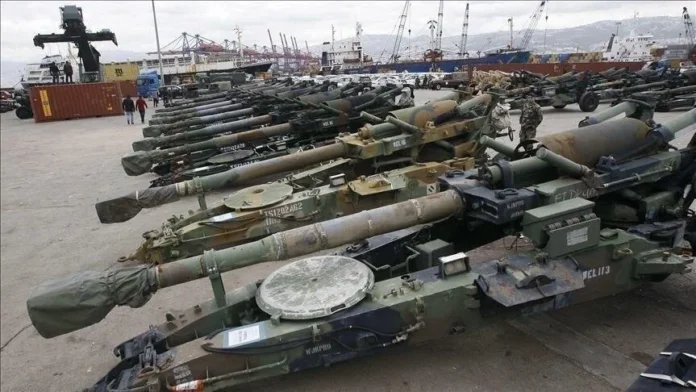Authors: Pieter D. Wezeman, Alexandra Kuimova, and Siemon T. Wezeman
Affiliation: Stockholm International Peace Research Institute
Organization/Publisher: Stockholm International Peace Research Institute
Date/Place: March 15, 2021/Sweden
Type of Literature: Report
Number of Pages: 12
Link: https://sipri.org/publications/2021/sipri-fact-sheets/trends-international-arms-transfers-2020
Keywords: Arms transfer, Defense, Budget, Import/Export, Security, US, China, France, India, Saudi Arabia, Egypt, Turkey
Brief:
In its latest updated data on arms transfer, SIPRI research finds three of the top five importers of arms during the 2016-2020 period were from Asia, namely India, Australia, and China, besides Saudi Arabia and Egypt, all together accounting for 36% of the total arms imports during this period. Among the top ten arms importers, six are Muslim-majority countries, including Saudi Arabia, Egypt, Algeria, Qatar, UAE, and Pakistan. The only Muslim-majority country with top arms exports is Turkey, which ranks 13th in the list. In the same period, the US led the top five arms exporters, accounting for 37% of the total share; in the past five years, Russia lost at least 6% of its exports, which represents a 22% decrease of the global share between 2011-2015 and 2016-2020. France, Germany, and China are the other three top exporters. Interestingly, China figured prominently in both lists, in an apparent signal of Beijing’s focus on increasing its military capacity and also making an attempt to shift the arms supply chain towards it even though it has not yet been successful in attracting the Middle East importers who have been the biggest customers of the Western arms giants. Rising to the second spot among importers, India remains the biggest customer of Russia, France, and Israel. New Delhi gets nearly 50% of its arms from Tel Aviv, whose share in the global arms market rose to 3.0% in the past five years. Interestingly, Azerbaijan and Vietnam are the other two top export destinations of Israeli-made arms. With its expanding influence of drones, Turkey’s overall change since 2011 has been a 30% increase in its defense exports. It has comprised a 0.7% share of the global market since 2016, a slight but significant improvement from the same period since 2011. Its top three export destinations remained Oman, Turkmenistan, and Malaysia in the past five years. SIPRI also reports a peculiar finding regarding arms transfer in 2020 – the year plagued by the COVID-19 pandemic, which saw the value of global arms transfers down by 16%. However, the US and French arms exporters recorded higher value in the same year while Australia’s imports posted a record high during the same period.
By: Riyaz ul Khaliq, CIGA Non-Resident Research Associate




